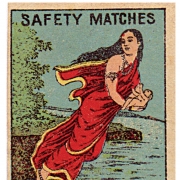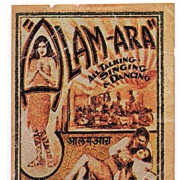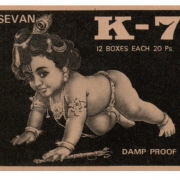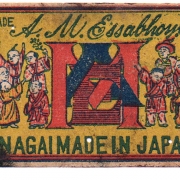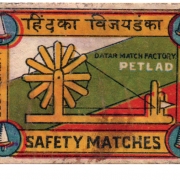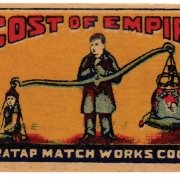
Etcetera
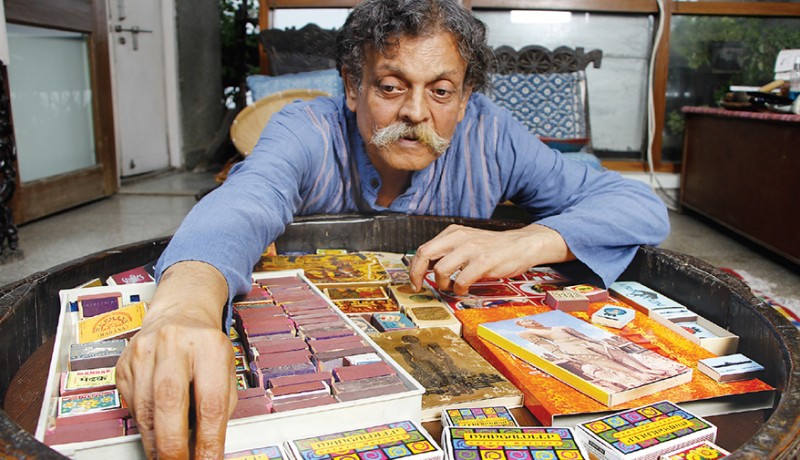
A retired architect records the story of a nation through a quirky hobby—collecting matchbox labels—discovers Ambica Gulati.
To most people, matchboxes are nondescript containers of matchsticks that are carelessly discarded once empty. But to some, like 60 year-old Gautam Hemmady, they are little treasures that chronicle the story of a nation and its culture over time.
Hemmady, a retired Delhi-based architect, is a ‘phillumenist’. “Yes, there is a name for people like me,” he chuckles. “I am a collector of matchbox labels. I spend hours online in search of new labels, buying collections on eBay, and exchanging with other collectors.” During the past four years, Hemmady has collected over 25,000 matchbox labels and recently held his first exhibition at the India International Centre in Delhi, titled Matchbox Labels And The Stories They Tell.
The oldest labels in his collection date back to 1880-1890, although they are difficult to date precisely. There is no central archive or scale to which the labels can be compared and catalogued. “Almost everything is learnt from observations that collectors make and from the labels themselves, in a speculative sort of way.”
Giving us a peep into his unique world, Hemmady says matchboxes have always been used for advertising. Cigarette, cigars or beedi manufactures commissioned special labels, and even the swadeshi movement tapped into its potential. “There are one or two ‘protest’ labels, but Independence-era matchboxes are mostly of the patriotic kind, with symbols like the flag, Ashoka chakra, the charka, and calls to support Indian industry.”
Although there hasn’t been an outright popular label over time, people do recognise ‘Ship’ as a brand as it has been around since 1942, and imported to India well before that time, says Hemmady. Currently, ‘Aim’ has a very strong following (since 2003). ‘Home Lites’ (1987) continues to be popular and ‘Ship’ with several changes continues to survive in this market, he adds.
“Indian gods and goddesses are a popular theme with most manufacturers as are movies. In fact, it’s difficult to think of something that has not been featured on matchboxes,” remarks Hemmady, pointing to the similarity to Raja Ravi Varma’s paintings, showing a woman and man on a swing, much like Radha-Krishna.
There are over 5,000 matchbox brands in India, he adds, explaining that the industry flourished during British times. After Independence, manufacturers moved south, near Coimbatore in Tamil Nadu. “Even though cheap and efficient plastic lighters are replacing matchboxes world over, it will be a while before they completely take over in India, which is the largest manufacturer and exporter of matchboxes in the world,” he says.
Hemmady spends considerable time crisscrossing Delhi in search of new labels. Even a holiday is fun only if he finds new matchboxes to take home. “Different parts of the country have different labels to offer a collector. But I also tell my neighbourhood paanwallah to keep the wrappers of the cartons for me, or to buy a new brand when he can. I think he finds me quite strange,” he adds with a chuckle.
In fact, it was an interaction with paanwallah one wintry evening four years ago that led Hemmady to his new love. “I was out for a walk to warm myself. As I strolled down the road, I noticed a different matchbox on sale at each paan-and-cigarette shop. And each paanwallah was willing to talk about where they sourced their matchboxes. I remember enjoying those little conversations immensely.”
Collections are valued based on how much someone is willing to pay for them. “About 200 delightful labels from the 1920s and ’30s cost me about ₹ 6,000,” he reveals. “A small collection of about 1,500 matchboxes from the ’90s cost me about ₹ 10,000 (plus travel to and from Chennai, a biryani dinner and an idli breakfast!). Every period has its charm and I would like to save anything I can afford to.”
This hobby has become Hemmady’s single-minded passion, bordering on obsession. He has begun writing about matchbox labels and meticulously catalogues them by recording details of each label on a neatly organised Excel sheet. But to what end? “When I began collecting, it surprised me how little information there is about the Indian match industry,” he responds. “It is all very unorganised and little has been written about it. So I decided to establish some sort of archive. Sometimes I feel I’ve bitten off more than I should have.”
Hemmady has always been a bit of a recluse but so deep is his commitment that he has even given up using his phone after he lost out on a chance to procure nine Mahatma Gandhi labels from Japan. “I was bidding on eBay and suddenly the phone rang. I forgot about the auction, which was to end in a few hours, and I lost the labels,” he shares.
Phillumeny is only Hemmady’s latest hobby. He’s collected books, clocks and watches, tools and drawing instruments, little glass bottles, stamps (of course!), even wood species. “I like arranging them, organising them, reading about them, at times just looking at them and discovering little things. It’s my way of exploring worlds I knew little about.” Enough said!
—with inputs from Natasha Rego
Photo: Himanshu Kumar Featured in Harmony — Celebrate Age Magazine September 2016
you may also like to read
-
Cracking the longevity code
Small yet impactful choices can be game-changers, writes Srirekha Pillai At 102, there’s no stopping Chandigarh-based Man Kaur, the world’s….
-
Home, not alone
While a regulatory framework is vital for senior-care facilities, the need of the hour is to develop an ecosystem to….
-
Birthday Girl
Published in a special edition to honour Japanese master storyteller Haruki Murakami’s 70th birthday, Birthday Girl (Penguin; Rs 100; 42….
-
A huge treat for music lovers
Published as the revised and updated second edition, Incomparable Sachin Dev Burman (Blue Pencil; Rs. 599; 470 pages) the authoritative….



